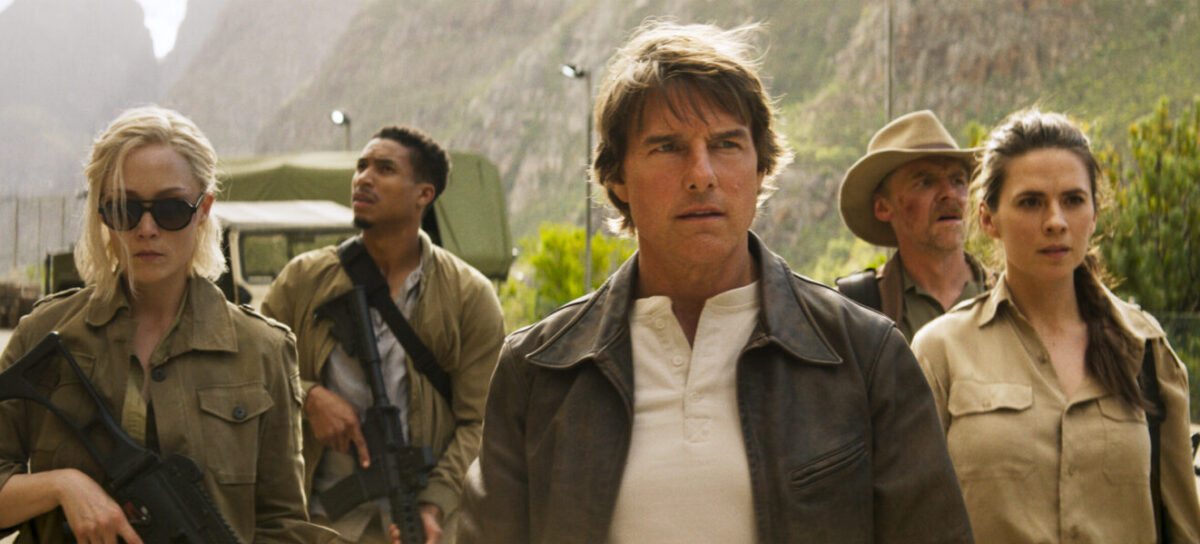Mission: Impossible – The Final Reckoning is a cinematic love letter from Tom Cruise and director Christopher McQuarrie.
After the first three entries of the franchise provided mixed results critically (with Rotten Tomatoes results in chronological order of – 66%, 57%, and 71%). One of the hallmarks of this initial cluster of films was the vastly different styles implemented by the three different directors contracted for each film.
Brian De Palma’s original (1996) emphasised espionage and suspense, John Woo‘s sequel (2000) focused on stylised action and melodrama, and finally J.J. Abrams’ (2006) focused on character depth and emotional stakes.
Brad Bird’s 2011 entry, Mission: Impossible- Ghost Protocol, served as a soft reboot for the series. Birds film seemed to focus and streamline the series in a way that had eluded it in the past.
This included an enhanced cinematic approach that ranged from its inventive set pieces (such as the Burj Khalifa sequence), to its music scoring and cinematography that laid the stylistic foundation that Christopher McQuarrie would build on with the next four films (Rouge Nation, Fallout, Dead Reckoning, The Final Reckoning).
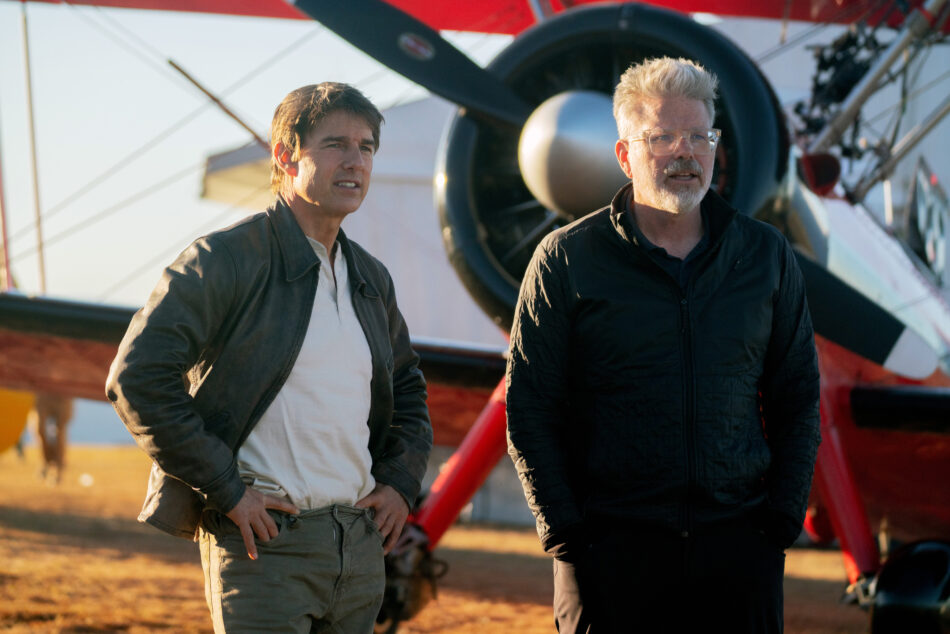
Another key piece of Bird’s film that was pivotal for the franchise was returning the narrative to its original roots (the 1966 TV series, Mission: Impossible), by focusing on team-centric missions.
While Ghost Protocol was a major success both critically (93% on Rotten Tomatoes) and financially (second highest profit margin in the series), this new film apparatus established by Bird set the franchise up for even greater heights.
It is rare for a movie franchise to get better from its fourth film onwards, which is evident in the breakdown below of Rotten Tomatoes scores:
Mission: Impossible (1996) – 66%
Mission: Impossible II (2000) – 57%
Mission: Impossible III (2006) – 71%
Mission: Impossible – Ghost Protocol (2011) – 93%
Mission: Impossible – Rogue Nation (2015) – 94%
Mission: Impossible – Fallout (2018) – 97%
Mission: Impossible – Dead Reckoning Part One (2023) – 96%
Mission: Impossible – The Final Reckoning (2025) – TBD
Since the soft reboot, the series has also had some of its strongest financial performances. The table below shows that many of the films’ strongest profit margins were produced with the most recent films (besides the original entry, which performed phenomenally from a profit margin point of view).
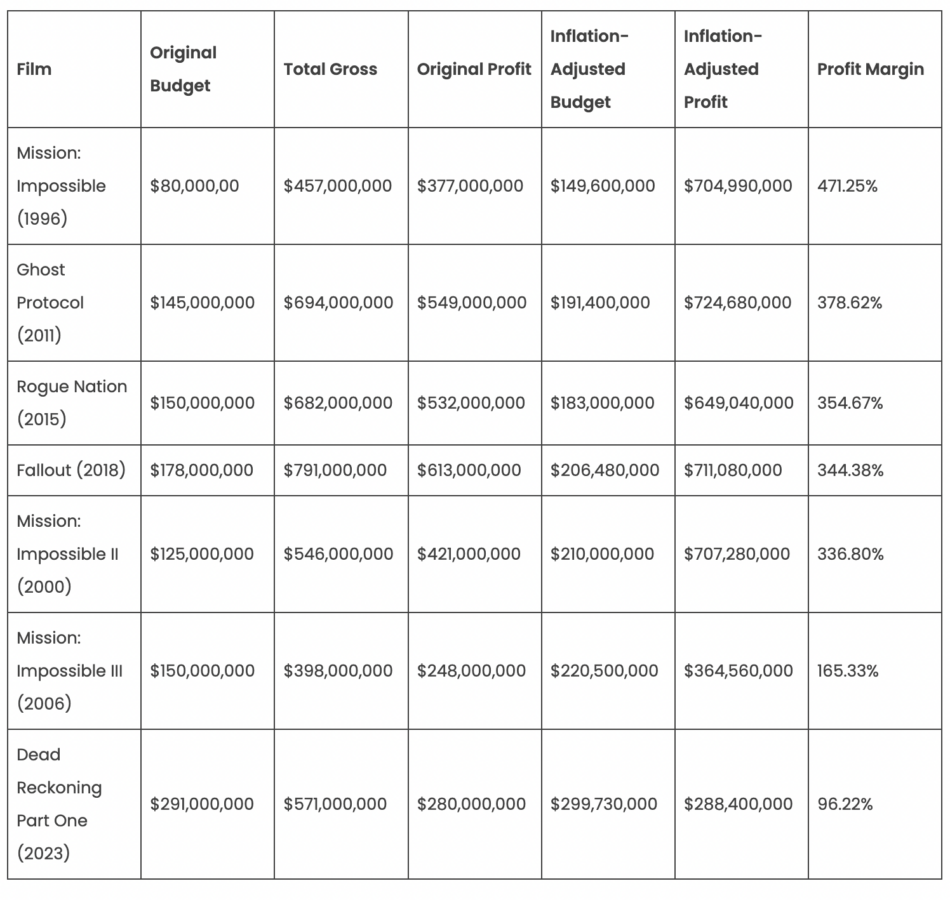
Please note that these numbers do not factor in marketing budgets which are also significant. For example the marketing budget for Fallout was expected to be around $140 million, which is approximately 78% of the films budget.
Although the thing that may stand out the most from the above table is the profit margin for the franchise’s most recent film, Dead Reckoning. Despite a strong total gross of $571 million, it has a profit margin of 96.22% (less when considering the significant marketing budget that would have been assigned). This is due to its large production budget of $291 million.
And with the budget for The Final Reckoning believed to be around $400 million, this is why we referred to this film as a cinematic love letter. The franchise, at its core, has always served as a tribute to high-budget action films and classic espionage films all at once, but this most recent film is a culmination of that.
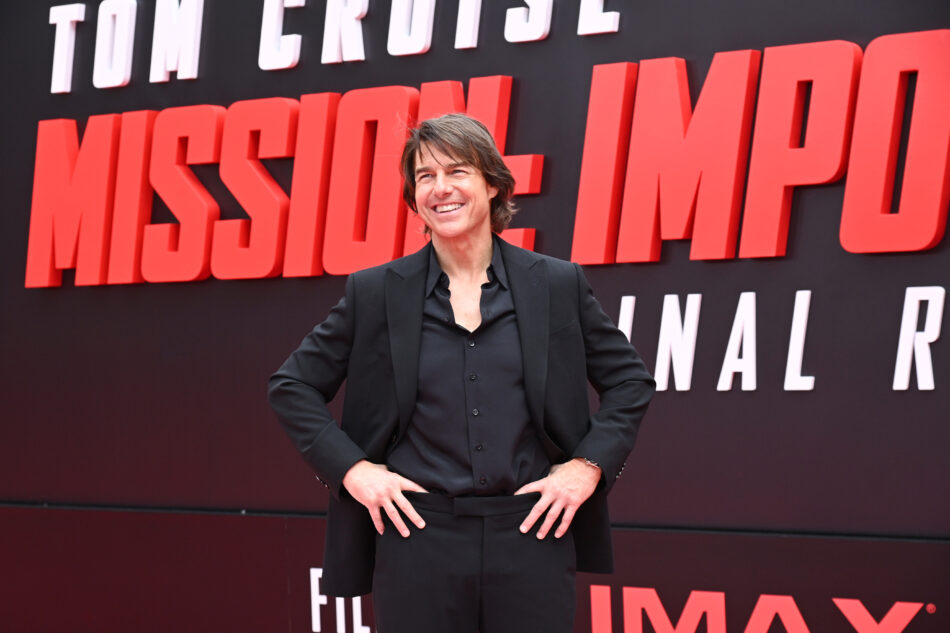
While Tom has done very well for himself financially (He has generally been compensated approximately $70 million – $100 million per Mission: Impossible film). A lot of that budget is poured into producing a movie with a focus on quality, locations and real stunts.
This $400 million budget makes The Final Reckoning one of the most expensive films of all time.
When adjusted for inflation, Pirates of the Caribbean: On Stranger Tides and Cleopatra are often cited as the most expensive films of all time.
Pirates of the Caribbean: On Stranger Tides (2011) had an estimated production budget of $379 million at the time of its release. Adjusting for inflation, this amounts to approximately $422 million. This figure excludes marketing and promotional costs.
Cleopatra (1963) had a production cost of $44 million at the time—a record-breaking amount then. When adjusted for inflation, this equates to approximately $422 million , placing it on par with On Stranger Tides.
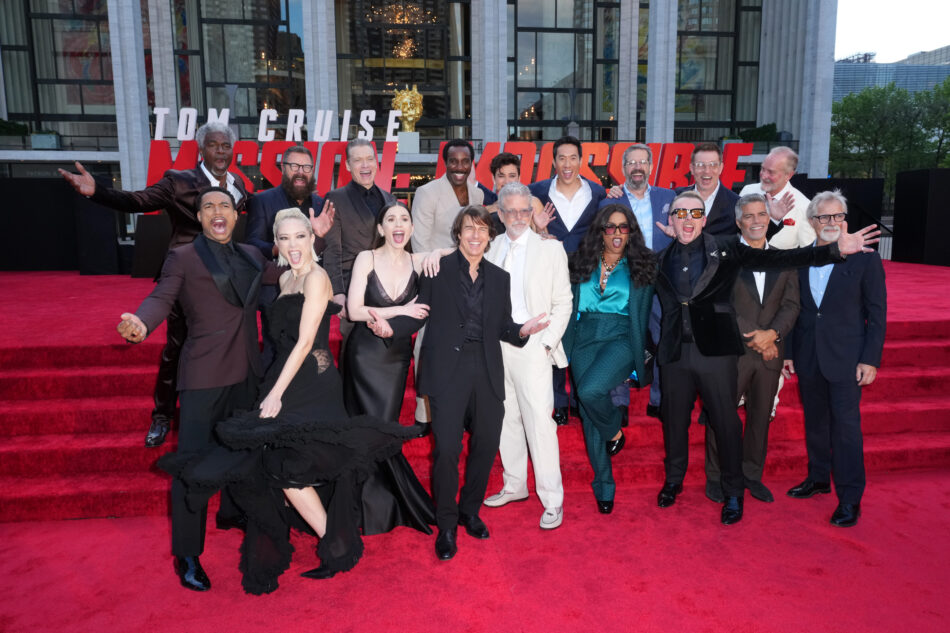
While this film might ultimately be an albatross for its studio (Paramount) and not provide the return on investment that it requires in these trying economic times. There is something beautiful about how this film throws all its chips on the table to make pure cinema fanfare.
Outside of Marvel Studios, we might never see a film of this magnitude produced again. It takes a classic approach to cinema and combines it with modern resources.
This film is absolutely made for cinema. It is a popcorn movie.
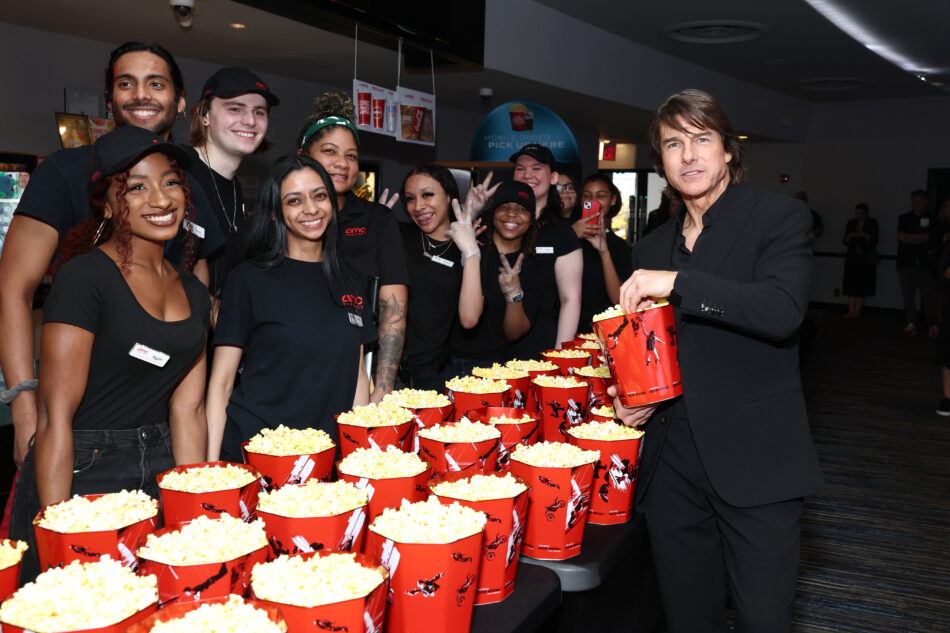
While it’s not perfect and is edged out by some of the other films in the series for overall quality, it is a thrill-a-minute. It is almost three hours of heart-in-the-mouth emotional investment for the cinema goer as Tom doubles down again and again on creating classic cinema.
This could not be any truer than the fact that one of the signatures of this series is that Tom generally does all of his own stunts.
Beginning with the CIA vault drop in the original film, where he balanced horizontally inches above a pressure-sensitive floor. In Mission: Impossible II, he scaled the cliffs of Dead Horse Point in Utah without a stunt double. In Ghost Protocol, he climbed the exterior of the Burj Khalifa, the world’s tallest building, hundreds of feet in the air. In Rogue Nation, he famously hung onto the side of an Airbus A400M during takeoff, repeating the stunt eight times. Fallout featured a motorcycle chase through Paris without a helmet, a high-altitude HALO jump from 25,000 feet, and a helicopter chase in which he acted as the actual pilot. He even broke his ankle during a rooftop jump but finished the scene, which was left in the final cut. In Dead Reckoning Part One, Tom executed a motorcycle launch off a cliff, followed by a BASE jump, which he performed multiple times, and took part in a train-top battle and collapse sequence shot on practical sets.
The Final Reckoning continues this with several innovative set pieces performed by Tom. Although the signature piece of the film sees him clinging to the wing of a 1930s Boeing Stearman biplane as it performs aerial manoeuvres at altitudes reaching 10,000 feet and speeds up to 140 mph. Filmed over the landscapes of South Africa, this was executed without the aid of CGI. He underwent extensive training to withstand the intense wind pressure and oxygen deprivation experienced during the stunt, even developing specific breathing techniques and hand signals to communicate with the pilot during the flight.
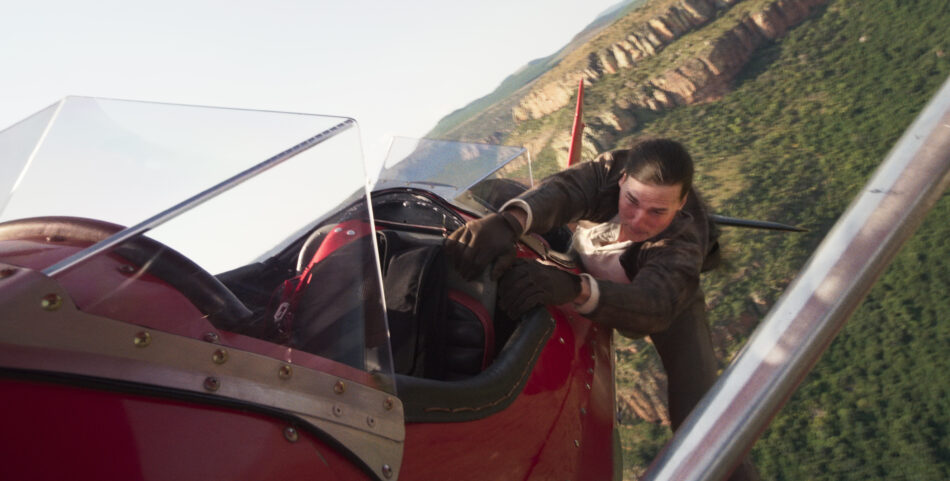
As per Mission: Impossible style, the film franchise also featured many beautiful and exotic locations in addition to South Africa. Overall the series has highlighted locations such as: Prague, London, Virginia, Sydney, Utah, Rome, Shanghai, Xitang, Berlin, Los Angeles, Dubai, Mumbai, Bangalore, Moscow, Budapest, Vancouver, Vienna, Casablanca, Marrakesh, Paris, Abu Dhabi, New Zealand’s Rees Valley, Norway’s Pulpit Rock, Venice, Birmingham, Lake District (UK), Malta, and various cities in South Africa.
In an industry where most film franchises are given a choice between leaving money on the table and concluding a film series to preserve the integrity of the product, or jumping the shark (continuing to go and eventually create lower quality films). Mission: Impossible somehow reinvented itself in the middle of its run and has crafted a body of work that will forever stand as unique.
There is significant doubt about whether or not this is the final film in the franchise. To be honest, there may not be room in the modern film industry for these types of films anymore, not the way that Tom and McQuarrie like to make them. If that’s the case, then that is a shame, but if it is, then they did not go gentle into the night; they went out in a blaze of glory.
Mission: Impossible – The Final Reckoning is in cinemas now.
Want to CHATTR with us? Follow us on Instagram, Facebook and TikTok for more entertainment news.
